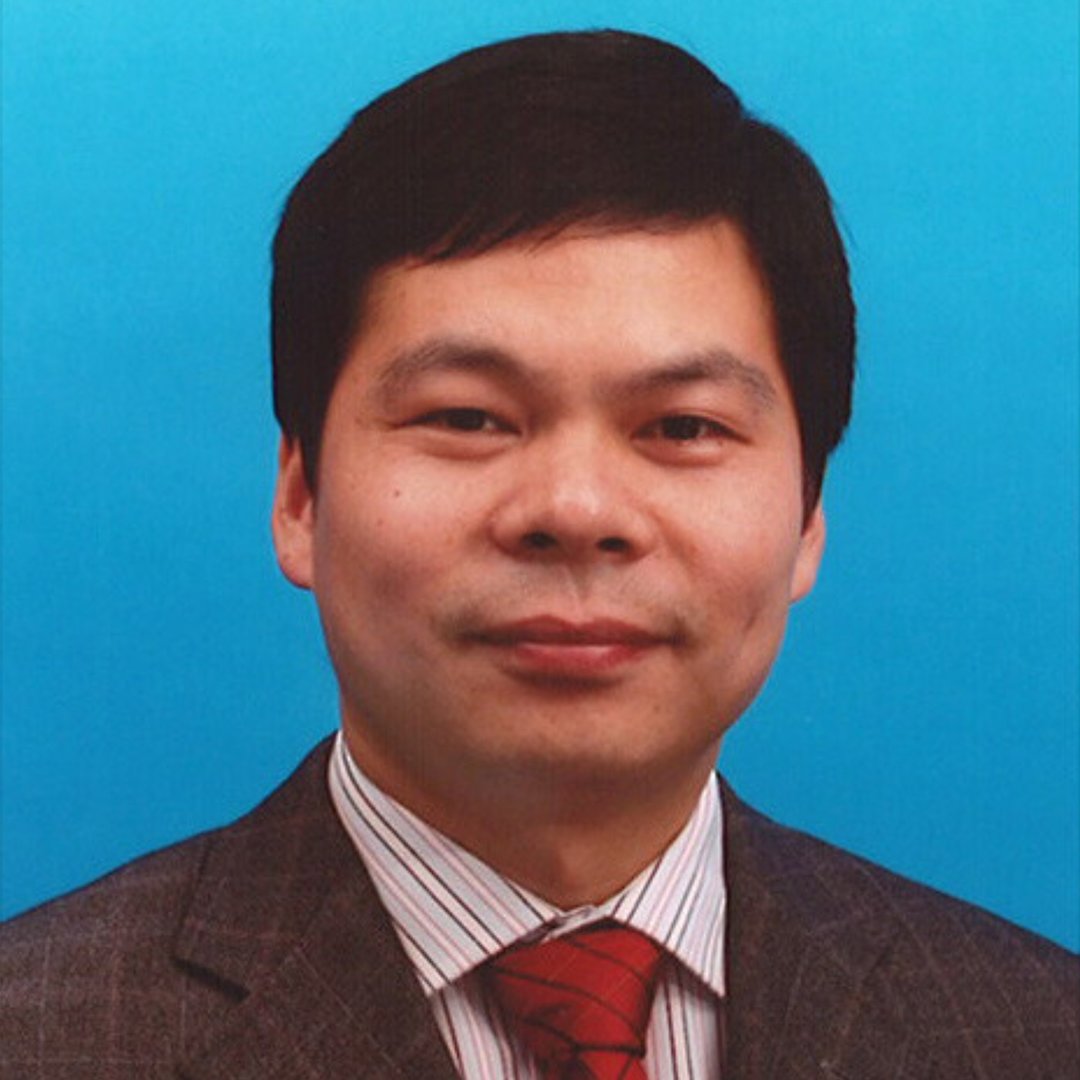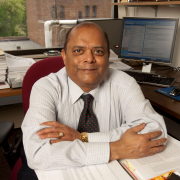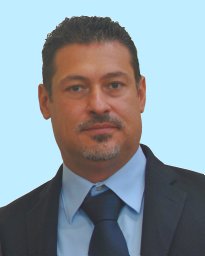Keynote Speaker Ⅰ

Prof. Xingjian Jing
City University of Hong Kong, China
Speech Title: Analysis and Design of Nonlinear Damping and its Applications
Abstract: Nonlinearity can take an important and critical role in engineering systems and thus cannot be simply ignored in structural design, dynamic response analysis, and parameter selection. A key issue is how to analyze and design potential nonlinearities introduced to or inherent in a system of under study, which is greatly demanded in many practical applications involving vibration control, energy harvesting, sensor systems and robots etc. This talk will present up-to-date development on nonlinear damping analysis and design based on a novel approach recently established, i.e., the X-shaped structure/mechanism method. It is shown that, superior nonlinear damping properties can be obtained with this X-shaped structure; a novel X-absorber is thus developed which can significantly enhance overall vibration suppression performance and robust subject to change of parameters, excitations, and/or nonlinearities; and a compact X-mount can also be designed with special oblique springs for wider quasi-zero-stiffness (QZS) range. These results definitely provide unique insights into technical innovation of passive or active vibration control in various engineering practices.
Biography: Xingjian Jing is now a full professor with the Department of Mechanical Engineering, City University of Hong Kong (CityU). Before joining in CityU, he was a Research Fellow with the Institute of Sound and Vibration Research, University of Southampton, followed by assistant and associate professor with Hong Kong Polytechnic University. His current research interests are generally related to nonlinear dynamics, vibration, control and robots, with a focus on exploring and exploiting nonlinear benefits in engineering with advanced theory, methods and applications. Prof Jing is the recipient of 2016 IEEE SMC Andrew P. Sage Best Transactions Paper Award, 2017 TechConnect World Innovation Award in US, 2017 EASD Senior Research Prize in Europe, 2017 the First Prize of HK Construction Industry Council Innovation Award, and 2019 HKIE Outstanding Paper Award etc. He has published 200+ refereed papers with 30+ patents filed in China and US. He currently serves as Associate Editors of Mechanical Systems and Signal Processing, IEEE Transactions on Industrial Electronics, and IEEE Transactions on Systems Man Cybernetics-Systems. He is the Session EiC of Biomimetics and Frontier in Mechanical Engineering. He also served as Technical Editor of IEEE/ASME Transactions on Mechatronics during 2015-2020. He was lead editors of special issues on "Exploring Nonlinear Benefits in Engineering" published in Mechanical Systems and Signal Processing during 2018-2019 and 2021-2022, and the chair or co-chairs of several international conferences or conference sessions (e.g., CMAME 2018, ACMAE 2019, ICANDVC2021-2023).
Keynote Speaker Ⅱ

Prof. Ramesh K. Agarwal
Fellow of AIAA, ASME, IEEE, SAE, AAAS, APS, ASEE
Washington University, USA
Speech Title: Recent Developments in Composite Materials, Structures and Additive Manufacturing for Aircraft Applications
Abstract: In recent years, there has been emphasis on "Green Aviation" with the dual aims of reducing the energy consumption as well as emissions. Several new concepts for the aircraft have been proposed to reduce drag, improve engine efficiency, and reduce mass. Majority of the wing-tube transport aircraft in service today are very efficient high speed air vehicles equipped with high bypass jet engines. Since early 1960s most improvements in aircraft efficiency have come from advanced turbofan propulsion technology (by 40 %) and improved aerodynamics to increase the Lift/Drag (by 15%); however, the structural efficiency of the aluminum aircraft did not change much because of limited emphasis on considerations of novel materials, structures, and manufacturing processes. In recent years, reduction of aircraft mass has become one of the major drivers in developing new aircraft design concepts, novel materials and manufacturing processes without affecting the intrinsic qualities, namely the safety, reliability, durability and comfort. As a result, the metal composites based on textile-reinforced polymers that are locally blended with metal elements are being investigated for aircraft structures. Additionally, in the near future a tremendous leap in material morphologies is expected from intermediate components such as solid plates and slender beams that are assembled and joined mechanically to flexible bundles of fibers, which are then transformed into integral three-dimensional structures via both the traditional textile manufacturing and modern fiber placement machinery. These textile structures are impregnated ("pre", "in situ" or "post"- before, during or after molding) and finally solidified into ultra-modern integral multipart and multifunctional solid lightweight composite structures. This review will describe these developments that will transform the ‘state of the art’ aircraft concepts into more efficient (more pay-load per unit weight and per dollar) transport, both by increasing the structural simplicity and efficiency, and by a more straightforward use of modern materials and processes. In addition, to address many challenges of "Green Aviation". nearly a decade ago NASA launched an initiative called the "Environmentally Responsible Aviation (ERA)". In this initiative, Blended-Wing-Body (BWB) aircraft and other X-planes are being considered for a long-haul transport aircraft. BWB provides many aerodynamic advantages; however it presents structural challenges due to the noncircular cross section of the center part of its fuselage. Although significantly lighter than the conventional aluminum structures, even the most efficient composite primary structures used in today’s state-of-the-art aircraft are not adequate to overcome the weight and cost penalties introduced by the highly contoured airframe of the BWB. In the pressurized cabin regions where the design is primarily driven by the out-of-plane loading considerations and where secondary bending stresses are developed, a traditional layered material system would require thousands of mechanical attachments to suppress delaminations and to join structural elements, ultimately leading to fastener pull-through problems in the thin gauge skins. Furthermore, a conventional composite solution for BWB would entail high manufacturing costs due to its highly contoured airframe. Also, an effective BWB structure must operate in out-of-plane loading scenarios while simultaneously meeting the arduous producibility requirements inherent in building the highly contoured airframe. In addition to the secondary bending stresses experienced during pressurization, another key difference in the BWB shell is the unique biaxial loading pattern that occurs during maneuver loading conditions. It is important to capture such attributes to overcome the inherent weight penalties of the BWB noncircular pressure cabin. To address these issues, scientists at NASA and the Boeing Company are working together to develop a new structural concept called the pultruded rod stitched efficient unitized structure (PRSEUS). This concept is being analytically and experimentally evaluated using a building block approach that assesses the fundamental structural responses in representative loading environments. This presentation will also review the current status of PRSEUS. Furthermore, 3-D printing and additive manufacturing are emerging as very promising techniques for fabrication of composite parts. This review will also address the state of the art of these technologies as they relate to the fabrication of some aircraft parts.
Biography: Professor Ramesh K. Agarwal is the William Palm Professor of Engineering in the department of Mechanical Engineering and Materials Science at Washington University in St. Louis. From 1994 to 2001, he was the Sam Bloomfield Distinguished Professor and Executive Director of the National Institute for Aviation Research at Wichita State University in Kansas. From 1978 to 1994, he was the Program Director and McDonnell Douglas Fellow at McDonnell Douglas Research Laboratories in St. Louis. Dr. Agarwal received Ph.D in Aeronautical Sciences from Stanford University in 1975, M.S. in Aeronautical Engineering from the University of Minnesota in 1969 and B.S. in Mechanical Engineering from Indian Institute of Technology, Kharagpur, India in 1968. Over a period of 45 years, he has worked in several disciplines within mechanical & aerospace engineering, and energy and environment which include computational fluid dynamics, computational electromagnetics and acoustics, control theory, multidisciplinary design and optimization, turbomachinery and pumps, chemical looping combustion, carbon capture and sequestration, and wind energy. He is the author and coauthor of over 600 publications. He has given many plenary, keynote and invited lectures at various national and international conferences worldwide in over sixty countries. He is a Fellow of 28 professional societies including American Institute of Aeronautics and Astronautics (AIAA), American Society of Mechanical Engineers (ASME), Institute of Electrical and Electronics Engineers (IEEE), Society of Automotive Engineers (SAE), American Association for Advancement of Science (AAAS), American Physical Society (APS) and American Society for Engineering Education (ASEE). He has received many prestigious honors and national/international awards from various professional societies and organizations for his research contributions including the AIAA Reeds Aeronautics Award, SAE Medal of Honor, ASME Honorary Membership and Honorary Fellowship from Royal Aeronautical Society.
Keynote Speaker Ⅲ

Prof. Giuseppe Carbone
University of Calabria, Italy
Speech Title: Examples of innovative robotic and mechatronic designs with embodied intelligence
Abstract: Robots are widely used for a number of tasks ranging from conventional industrial applications to service robotics. Researchers aim to further spread robots by improving their performance and/or by finding novel potential applications. These challenging goals can be conveniently achieved by carefully and systematically considering them from the early design stages. This presentation outlines a general procedure for conveniently developing innovative robots for specific applications. This is achieved by identifying appropriate quantitative design specifications. It also requires establishing proper simulation models as well as implementing them in specific optimal design procedures. This considers embodied intelligent solutions to fulfill the desired operation with cost-oriented user-friendly features. Illustrative examples are outlined to show the feasibility and practical usefulness of this approach as referring to recent designs such as parallel/hybrid manipulators, humanoid robots, cable-driven robots for conventional or non-conventional applications including healthcare, agriculture, cultural heritage/space exploration.
Biography: Giuseppe Carbone has got his PhD degree in Robotics from the University of Cassino, Italy, in 2004 where he has been Assistant Professor and Key Member of the Laboratory of Robotics and Mechatronics for about 15 years. He has been visiting professor at Universidad Carlos III of Madrid, Beihang University, Waseda University, and several other well-reputed International Research Institutions. From 2018 he has joined University of Calabria, Italy as Associate Professor. From 2020 he is Chair of IFToMM TC on Robotics and Mechatronics. From 2018 to 2021 he has been Visiting professor at Sheffield Hallam University, UK where he served as Senior Lecturer and member of the Executive board of Sheffield Robotics from 2015 to 2017. From 2021 he is also Scientific Director of the International Research Laboratory Intelligent Robotic Systems and Technologies, University of Belgorod with State assignment of Ministry of Science and Higher Education of the Russian Federation under Grant FZWN-2020-0017. Among others he is Treasurer of the IFToMM Italy Member Organization, Editor-in-Chief of Robotica Journal (Cambridge Univ. Press), Section EIC of Journal of Bionic Engineering, MDPI Robotics, MDPI Machines, Technical Editor of IEEE/ASME Transactions on Mechatronics. He has been PI or co-PI of more than 20 projects including 7th European Framework and H2020 funds. He has received more than 30 Best Paper awards and more than 10 International Best Patent awards. His research interests cover aspects of Engineering Design, Mechanics of Robots, Mechanics of Manipulation and Grasp, Mechanics of Machinery with over 500 research paper outputs, 20 patents, and 16 Phd completions (6 ongoing). He has been also member of 20 PhD evaluation Commissions and viva in Italy, Spain, Finland, UK, Romania, Mexico. He has been invited to deliver Keynote speeches and lectures on his research activity at more than 30 International events. He edited/co-edited four books that have been published by Springer and Elsevier International Publishers. h-index 36 n. citations >5000 (source google scholar). Among other honors, he has received two Honoris Causa Doctoral Degrees.
